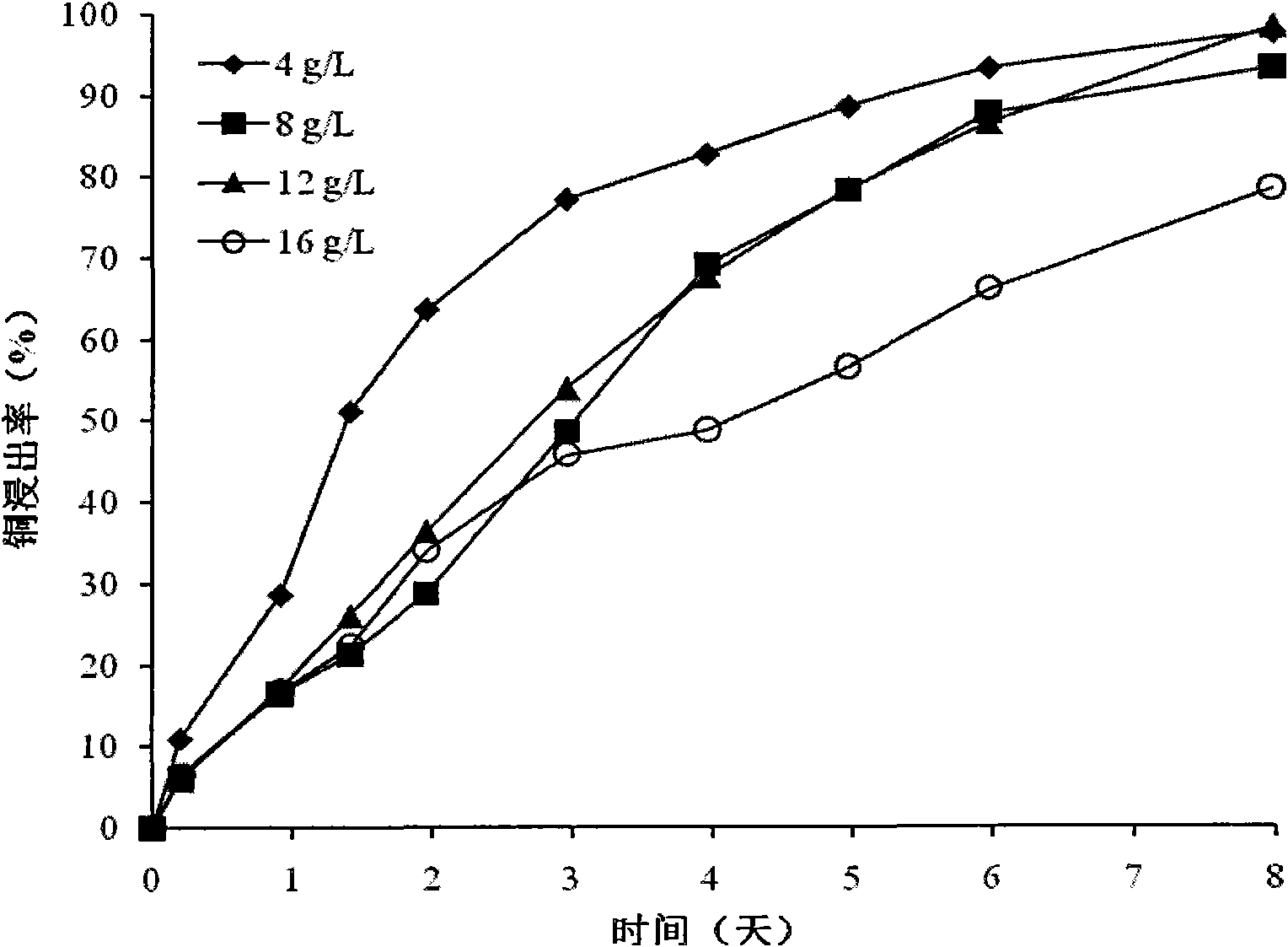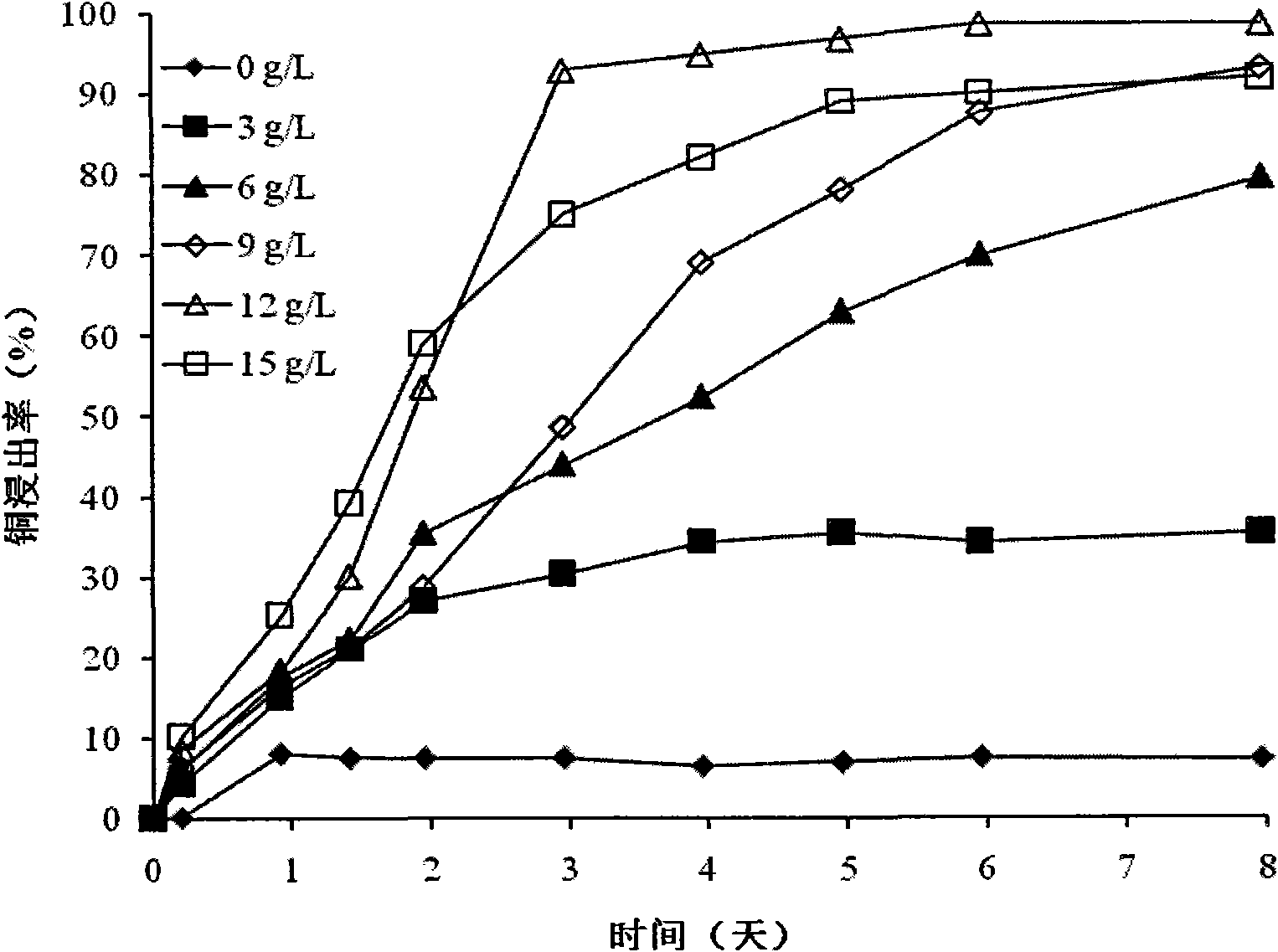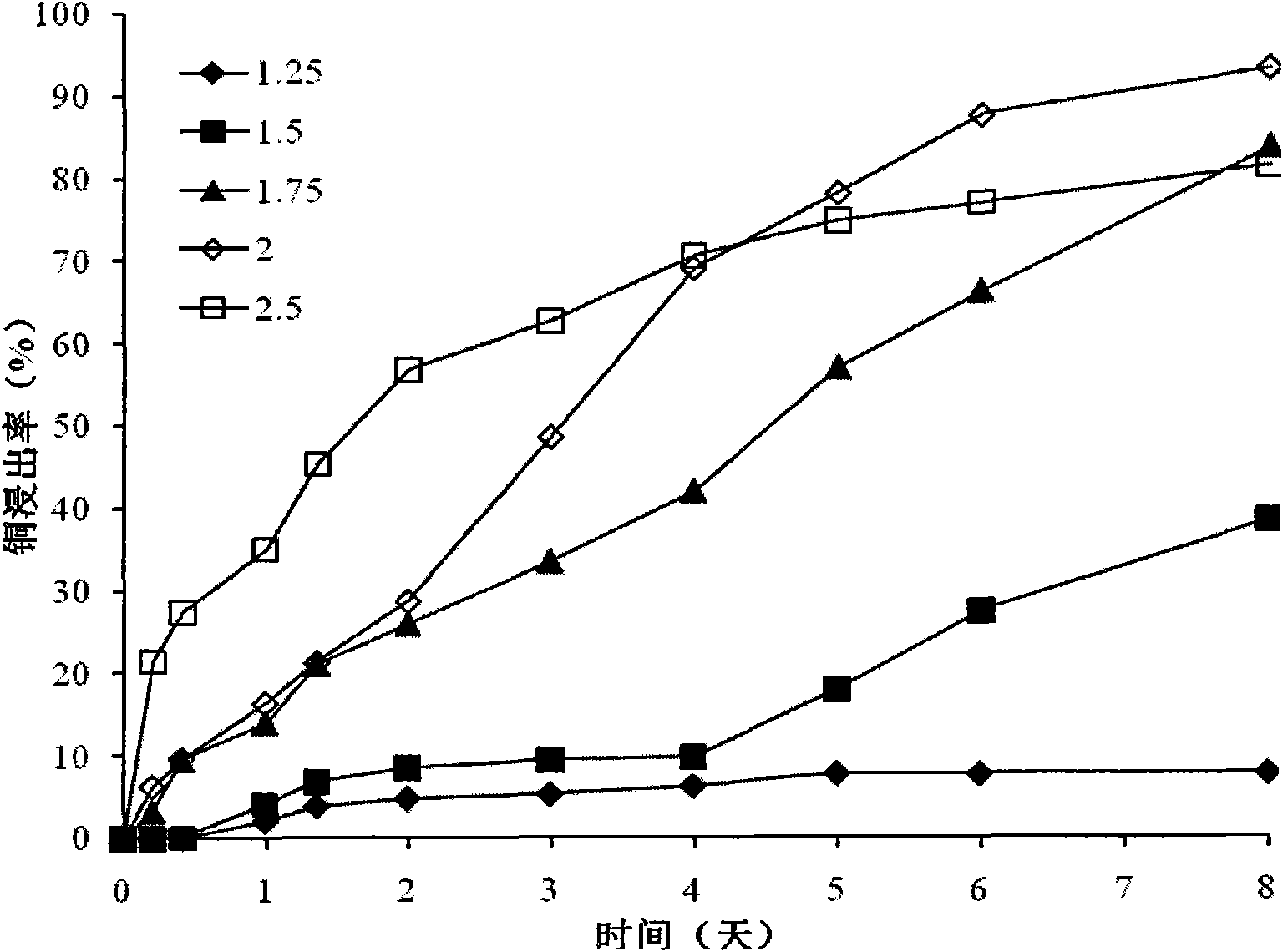Method for leaching valuable metals in waste circuit board by acidophilic bacteria mixed culture
A technology for waste circuit boards and valuable metals, applied in the direction of improving process efficiency, etc., can solve problems such as the complexity of environmental samples, insufficient large-scale application, high toxicity, etc., achieve high recovery rate, simplify processing procedures, and low energy consumption Effect
- Summary
- Abstract
- Description
- Claims
- Application Information
AI Technical Summary
Problems solved by technology
Method used
Image
Examples
Embodiment 1
[0040] Collect acidic pit wastewater from sulfide ore (mainly pyrite) mines, and inoculate the pit water into 9K medium according to the inoculum amount of 5%, 10%, 20%, 30%, and 40%. The components of 9K medium are as follows (g / L): (NH 4 ) 2 SO 4 , 3.0; KCl, 0.1; K 2 HPO 4 , 0.5; MgSO 4 ·7H 2 O, 0.5; Ca(NO 3 ) 2 , 0.01; FeSO 4 ·7H 2 O, 44.3, the initial pH was adjusted to 2.5, shake culture at 30°C, 160 rpm, observe the color change of the solution, after a large amount of reddish-brown precipitates were produced, first filter the precipitates with filter paper, and then use a 0.22 μm microporous membrane Filter the filtrate, and take the bacterial mixed culture on the membrane as the strain source.
[0041] Through the experiments of different inoculum amounts of mine wastewater in this example, the time required for the solution color to change to reddish brown is respectively 40%<30%<20%<10%<5%. Short, 5% required culture time is too long; compare the amount of...
Embodiment 2
[0043] Acid pit wastewater was collected from sulfide ore (mainly pyrite) mines, and the pit water was inoculated to 9K medium at an inoculation amount of 20%. The components of 9K medium are as follows (g / L): (NH 4 ) 2 SO 4 , 3.0; KCl, 0.1; K 2 HPO 4 , 0.5; MgSO 4 ·7H 2 O, 0.5; Ca(NO 3 ) 2 , 0.01; FeSO 4 ·7H 2 O, 44.3, the initial pH was adjusted to 3.0, shake culture at 25°C, 30°C, 35°C, 40°C, 160 rpm, observe the color change of the solution, after a large amount of reddish-brown precipitate was produced, first filter the precipitate with filter paper , and then filter the filtrate with a 0.22 μm microporous membrane, and take the mixed culture of bacteria on the membrane as the strain source.
[0044] Through the experiment of cultivating at different temperatures in this example, the time required for the color of the solution to change to reddish brown is 35°C≈30°C<40°C<25°C, too high or too low temperature will affect the culture time of the mixed culture, and...
Embodiment 3
[0046] Acid pit wastewater was collected from sulfide ore (mainly pyrite) mines, and the pit water was inoculated to 9K medium at an inoculation amount of 20%. The components of 9K medium are as follows (g / L): (NH 4 ) 2 SO 4 , 3.0; KCl, 0.1; K 2 HPO 4 , 0.5; MgSO 4 ·7H 2 O, 0.5; Ca(NO 3 ) 2 , 0.01; FeSO 4 ·7H 2 O, 44.3, the initial pH was adjusted to 2.5, shake culture at 30°C, 100, 140, 160, 180, 250 rpm, observe the color change of the solution, after a large amount of reddish-brown precipitate was produced, first filter the precipitate with filter paper, Then filter the filtrate with a 0.22 μm microporous membrane, and take the mixed culture of bacteria on the membrane as the strain source.
[0047] Through the experiment of cultivating at different rotation speeds in this example, the time required for the color of the solution to change to reddish brown is 180rpm≈160rpm<140rpm<250rpm<120rpm, that is, too high or too low a rotation speed will affect the cultivati...
PUM
 Login to View More
Login to View More Abstract
Description
Claims
Application Information
 Login to View More
Login to View More - R&D
- Intellectual Property
- Life Sciences
- Materials
- Tech Scout
- Unparalleled Data Quality
- Higher Quality Content
- 60% Fewer Hallucinations
Browse by: Latest US Patents, China's latest patents, Technical Efficacy Thesaurus, Application Domain, Technology Topic, Popular Technical Reports.
© 2025 PatSnap. All rights reserved.Legal|Privacy policy|Modern Slavery Act Transparency Statement|Sitemap|About US| Contact US: help@patsnap.com



